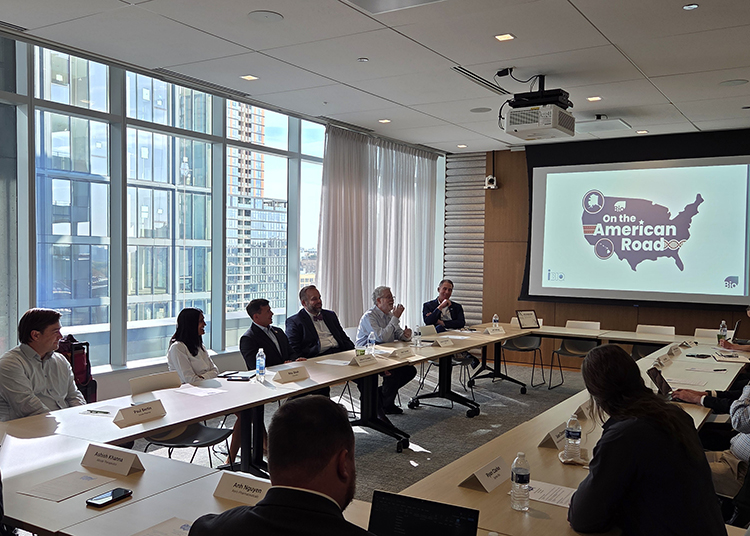Arthritis is the #1 cause of disability in the U.S., affecting 1 in 4 adults.
And while arthritis is typically considered to be an “older person’s disease,” the reality is that two-thirds of adults with arthritis are younger than 65 years old, and are managing their symptoms while working and living busy lives. This is an important consideration since 90% of people who live with arthritis say it interferes with their daily lives.
But the statistics don’t stop there. Hundreds of thousands of children younger than 17 also have arthritis, many of whom are suffering from autoimmune or autoinflammatory diseases. In fact, there are over 100 types of arthritis, including osteoarthritis and autoimmune forms like rheumatoid and psoriatic arthritis.
While prevalent, arthritis still too often goes untreated. In observance of World Arthritis Day on October 12, Bio.News is teaming up with the Arthritis Foundation to spread awareness of this disease and discuss how patient advocates are using their stories to improve healthcare policy and ensure people can access the care they need.
Advocating for Access
Kelly Chellis was thrown into the world of arthritis advocacy when her child, Trys, was 6 years old.
Chellis’ child woke up one morning with a swollen knee the size of a softball—no injury, no accidents, just a ton of swelling. By the next morning, it had worsened, the Arthritis Foundation writes. Despite her child’s assertion that they could go to school anyway, Chellis’ motherly instincts kicked into gear and they headed to their pediatrician, and eventually to the children’s hospital.
At first they assumed the swelling was due to an infection, but when Trys wanted to draw a hand turkey, Chellis’ noticed something important.
“When Trys laid their hand down on the table, their fingers would not actually lay flat. So that got rheumatology involved, and that’s when we heard the word ‘arthritis’ come out of the doctors’ mouths. I thought, What? That can’t be. This is a 6-year-old child. I truly was one of those people who thought kids can’t get arthritis.”
As Chellis learned first-hand, children with arthritis also face many of the same access challenges that adults face when trying to manage the disease: struggles with getting prescriptions filled, the out-of-pocket costs of the medications, prior authorizations, and all the hoops patients have to jump through when they have a chronic disease. And with arthritis in particular, the treatment delays these barriers cause have serious consequences, because the damage done by arthritis is not reversible, so progress lost is not something that can be gained back.
So, in 2019, when Chellis and her family were invited to participate in Ohio’s Arthritis Advocacy Day at its statehouse, they jumped at the opportunity.
“That was a day that definitely changed my outlook on what I could be doing within advocacy,” Chellis tells the Arthritis Foundation. “Telling that story and being able to share it, it just really felt good that maybe change could happen. We left there feeling so good, like we were truly doing something that can make a difference, not just for Trys, but for everyone suffering with arthritis.”
Stepping up to step therapy
And Chellis hasn’t stopped there. She has also spoken numerous times about the dangers of step therapy—the “fail first” utilization management tools that insurance companies use to save money, but that ultimately ends with patients becoming sicker as a result of not having timely access to the medicines and treatments that they need.
“Overly burdensome step therapy requirements can jeopardize the patient-provider relationship and unnecessarily prolong ineffective treatment,” writes the Arthritis Foundation, “preventing patients from immediately starting, or in some cases continuing, to access the most appropriate treatment recommended by their doctor.”
As an example, the foundation shares Hunter’s story:
“Hunter’s physician prescribed a biologic medication to ease the pain and joint destruction,” the foundation writes. “But his family’s insurance plan denied coverage, insisting that Hunter had to go through step therapy and ‘fail first’ on another drug before they would consider approving the much-needed biologic.”
It took Hunter 14 months of “fail first” healthcare before he was finally allowed his original prescription, but the damage was already done. “The 14-month wait to get on the appropriate medicine left Hunter in immense pain, causing him to miss months of school and leaving him with permanent joint damage,” the foundation explains.
The Arthritis Foundation and its advocates, like Chellis, continue to share the stories of Trys and Hunter and, as Chellis explains, her own recent diagnosis of osteoarthritis has only strengthened her resolve.
“All the things that Trys and I do with the Arthritis Foundation just bond us closer,” Chellis says. “I was diagnosed with osteoarthritis two and a half years ago. Waking up with that morning pain and thinking of my child going through that for so many years—it all really brings us closer. Working together on such a good cause also brings us closer and just gives us a lot of satisfaction.”
Becoming an advocacy superhero
The Arthritis Foundation also notes that there are many ways to advocate outside of going to Capitol Hill—and they are there to give their patient population options. From awareness walk or run events, to educational days at churches and libraries, to collecting patient stories, there is never a quiet day in the world of arthritis advocacy.
As Talisa King, a rheumatoid arthritis patient, explains, it was the Arthritis Foundation that turned her into an advocacy superhero.
“The day of my onset, I felt really, really tired, a little achy, and I was dropping things throughout the day,” recalls King. “I went to the hospital and was there for almost a month. For a long period of time, I couldn’t walk on my own, I couldn’t tie my own shoes, I couldn’t cut my own food. It was about 18 months before I received a firm diagnosis.”
She turned to the internet to find support, which is when she linked up with the Arthritis Foundation.
“Not only do they offer education and support services, they help you navigate through your condition,” King says. “I wrote a letter that if they were willing to train me as some level of an advocate or support group leader, I would be the change that I wanted to see within my area to ensure that no one else had to go through what I went through.”
And as the Foundation explains in their “Live Yes with Arthritis Podcast,” there are so many ways that patients can get involved.
“I avoided advocacy for a long time,” explains Deb Constien, an arthritis advocate. “I thought you had to be political, and I literally thought that you had to choose a side, so I was overjoyed to hear that it had nothing to do with politics. Truly. When you’re talking to legislators, you’re not there as a Republican or a Democrat, you’re there as a patient and you’re telling your story that way.”
What Constien realized was that she could take her 43 years of experience as an arthritis patient and use it as fuel to start conversations with the people that can make important changes happen. “All of our policy priorities,” she explains, “I’ve literally had experiences in almost every one of them.”
Constien’s co-advocate on the podcast, Anna Hyde, explains the breadth and levels of engagement that patients can explore.
“We have a wealth of resources on our website,” she says. “There’s a hub for issue briefs where you can learn more about the specific issues [including prior authorization, step therapy, affordability issues, biomarker, access, etc.]. We also have a hub for action alerts. If you want to learn more about what open action campaigns we have. We have a story bank if you want to lend your story. And we have an entire video training library—everything from advocacy 101, to specific training videos doing deep dives into some of these issues. And if all else fails, you can also reach out to me directly.”
King echoes Hyde and Constien’s sentiment; anyone can advocate for better healthcare for arthritis patients, be their contribution big or small—nothing is too little.
“Having this network in this community of people through the Arthritis Foundation is amazing,” says King. “The driving force for turning my struggles into a platform for other people is never wanting anybody to feel the way that I feel. I fight for people who don’t have the strength to fight for themselves. I do not consider myself a superhero, but I do know some people that do.”
Getting involved
So how can you get involved? The toolkit the Arthritis Foundation made for Arthritis Awareness Day this October 12 is a great place to start. Jam-packed with links to research, patient stories, policy priorities, and events, it has everything needed to start becoming an advocacy superhero. You can even sign up for info packets and opportunities to volunteer.
There are also a number of fun run/walk events that the foundation and its partners host to raise awareness and money for research including the Jingle Bell Run, held during the Christmas season.
And those in biotech who want to keep their finger on the pulse of what’s happening in policy, science, and more in the arthritis space can join the Foundation’s Arthritis Healthcare Forum. The Forum brings together leaders from healthcare, industry, consumer brands, and advocacy to share patient perspectives and expert insights, while advancing patient-centered solutions. Learn more about partnering with the Foundation here.




